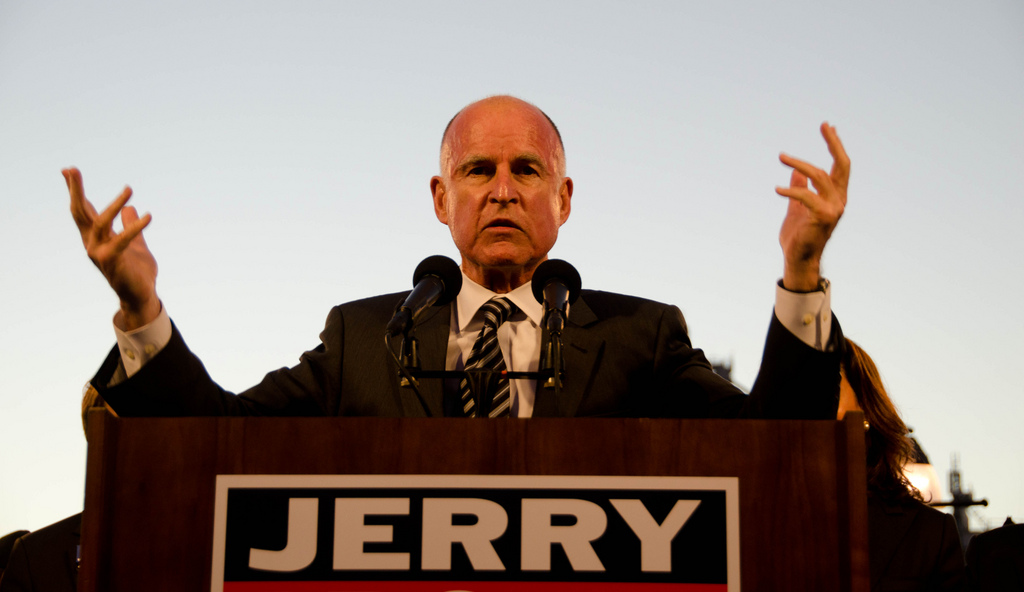While free-market environmentalists push cap-and-trade systems as a panacea for climate change worries, many in the environmental justice community have yet to buy into it. Their reasons for this vary, but one major concern is that there’s little guarantee that overburdened communities won’t still catch the brunt of industrial pollution. What stops billionaire companies like ExxonMobil from continuing to pollute poor communities if, rather than rein in their emissions under the established cap, they can simply purchase more permits to pollute?
When California started its cap-and-trade system in late 2011, lawmakers addressed these concerns by requiring 25 percent of all revenue from permit auctions to go toward programs that help disadvantaged communities. Also, 10 percent of the revenue would have to be spent directly in those communities. But last year, when the auction dividends started rolling in, Gov. Jerry Brown reneged on that deal, putting $500 million from the permit auction profits into the state’s rainy day fund.
This obviously didn’t endear many environmental justice activists to the cap-and-trade dream.
The governor is on the path to redemption, though. When he unveiled his budget Thursday, it included plans to not only pay back $100 million of what he “borrowed” from cap-and-trade fees, but also a pledge to make some much needed investments in low-income communities across the state.
“It is encouraging that the governor agrees with the 83 percent of Californians polled who say that these revenues should be directed to communities hardest hit by last century’s carbon pollution generated by fossil fuel companies,” Miya Yoshitani, executive director of the Asian Pacific Environmental Network, said in a press statement.
“Based on what’s been reported, the governor is making critical investments in existing programs that will help disadvantaged communities cope with the worst impacts of the climate crisis, while at the same time creating jobs and saving low-income consumers money,” said Vien Truong, Environmental Equity program director of the Greenlining Institute in Berkeley. “This will bring real benefits to communities hit first and worst by pollution and climate change as well as the recession.”
Of the $850 million available from new polluter fees, said Truong, roughly $600 million will be spent on improving public transit, energy efficiency programs, renewable energy, and urban forestry projects that can provide jobs for youth of color.
But, as is always the case with budget negotiations, the devil is in the details. Consider the $200 million from the fees is supposed to go to low-carbon transportation initiatives. Some of that will go to greening the trucks that serve commercial ports in places like Long Beach and Oakland. As thousands of trucks run in and out of these ports, and idle in traffic as they pass through cities, they spray asthma-causing soot.
California has a fund for greening commercial trucks, but it’s been empty for a while now. The Greenlining Institute is asking for $30 million out of the new budget for the purchase of hybrid and zero-emission trucks and buses throughout the state.
But some of that low-carbon money is also committed for rebates for purchasers of electric vehicles — a perk much less likely to benefit residents of low-income communities. Legislators will have to work out how much of the $200 million will go to each of these line items. That process — and the rest of the state’s budget wrangling — won’t be finished until June, at the earliest.
Still, if Brown’s proposed funding for low-income communities survives the legislative process, this could be a game-changer, proving that it is possible to design cap-and-trade programs to take into account communities that bear the brunt of industrial pollution. Time will tell.
I’m curious to hear from environmental justice advocates who aren’t sold on cap-and-trade — especially those in living with the system in the Northeast — if you think that Brown’s proposal could adequately address your concerns. After all, as goes California, so goes the country. While cap-and-trade has been a non-starter in Congress so far, I’m sure we haven’t seen the last of it.



